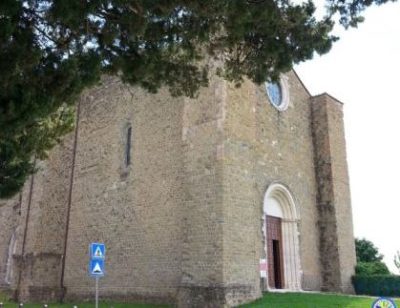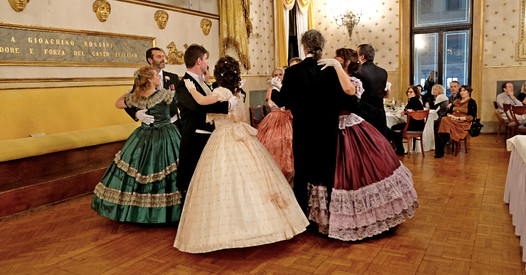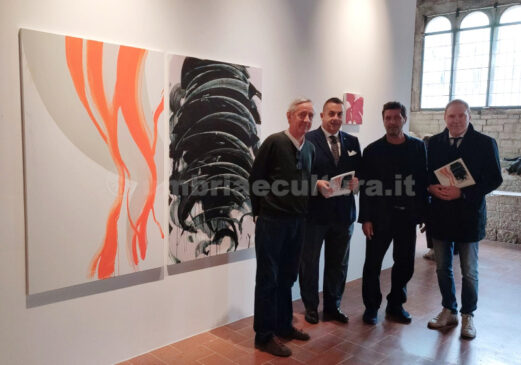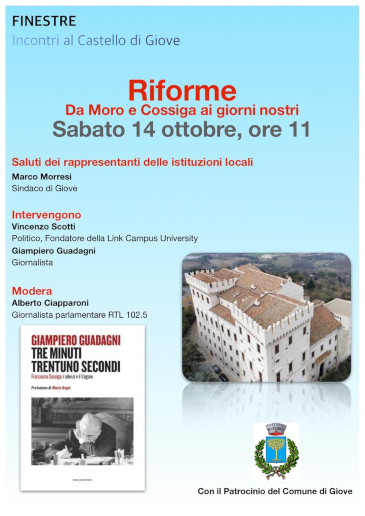The church of San Bevignate in Perugia is a very precious and rare testimony of the presence of the Templars in this region.
The order of the Knights Templar has always exerted an immense charm. The story of the powerful knight monks, whose original task was to defend pilgrims going to the Holy Land, has always given rise to mysteries and to the wildest fantasies and conjectures.
The church of San Bevignate was erected along via “Spargente”, towards Gubbio and towards the Tiber, outside the ancient walls of Perugia, as a religious presence in a metaphorical spiritual “desert”: the endless countryside unattended by religious buildings.
The documents trace the Templar presence in the Guelph Perugia to 1243, at the height of its wealth and splendor, when Pope Gregory IX ordered its settlement in the city to contrast the presence of the Cistercians, already present, on the Ghibelline side.
The essentiality of the Templar order is represented in the exterior aspect of the church, powerful and severe and of big size. It was originally built to be a Commenda (the Commenda di San Girolamo) to watch over a very large territory. The commendas collected the foodstuffs produced in the surrounding countryside to be sent to the Knights in the Holy Land.
Simple and austere, externally, in a typically Umbrian Romanesque-Gothic style, with the projecting foreparts that give a powerful appearance and an essential and bare facade. The upper part of the facade houses an oculus through which, on summer days, the ray of light that filters through it strikes the crucifixion scene inside the church. San Bevignate church is one of the major remaining examples of Templar architecture, unfortunately after the dissolution of the order, many Templar buildings were demolished, and this is certainly among the largest ones. The round-headed portal shows the Templar symbols (the cornflower and the rose of life) and some fantastic beings symbolizing the evil, evil that the faithful people, entering the church, leaves outside.
The interior has a central plan, single hall, square apse and raised altar on the crypt of the Saint to whom the church is dedicated, to whom the people of the city were strongly devoted.
But who was San Bevignate? A Saint of whom there is no evidence of his actual existence, which the people of Perugia have never seen as a saint, but who had such a strong and passionate devotion as to obtain secular canonization in 1453.
It is said that he was a hermit who chose this place for his hermitage, and to whom a series of miracles were attributed. By popular acclaim therefore, the church was erected in 1256 and dedicated to San Bevignate, depicted with the halo.
But it is the pictorial apparatus inside that fascinates beyond words. The predominant colors are white, a symbol of purity, red, a symbol of sacrifice and dark colors, a symbol of humility.
On the walls, decorated with a fake wall structure the twelve apostles plus one appear: San Barnaba.
In the apse the crucifixion, the figure of San Bevignate, in white dress, with the blessing Bishop, hosts of the damned and the elect, a theory of flagellants and a blessing Christ. A host of bodies rising from the tombs symbolizes the Last Judgment. Also recognizable are the symbols of passion: the spear, the crown of thorns, the sponge.
In the scene of the last supper, Judah’s position is particular, on the opposite side of the table from the other diners.
A graffiti from 1946, can be read on the thirteenth-century frescoes, testifying the troubled history of the Church and its use, in the past, also as a warehouse.
After the dissolution of the Templar order in 1312, the church, like all the assets of the order, passed to the Hospitallers and the whole complex was given to the nuns.
At the bottom of the apse there is a well from which, according to the legend, San Bevignate made water flow. As already mentioned, several miracles were attributed to the saint: in addition to letting the water flow, he matured wheat and olives in times of famine, saved three people from the death sentence, saved a child from a wolf. The scene is visible frescoed in the church, and can be interpreted, like most of the frescoes here, through different interpretations: it can be the representation of the legend of the saint or the symbolic representation of the mission of the order to defeat evil.
The frescoes on the counter-façade are even more fascinating because they can be read and interpreted in four different ways.
The first interpretation is the historical one: the scene of a battle at the gates of a city (perhaps Nablus) between a group of infidels and the winning Templar army is represented.
The second is moral: the victory of good over evil, present in each of us and towards which everyone fights his personal battle; the fight against the infidels who, not knowing the religion of Christ, were equated to the evil itself.
The third is the allegorical one: the scene of a ship with the Templar knights on board: the ship represents the Church and the mission of the Templars to bring the Christian religion to the Holy Land, the fish that populate the waters are also among the oldest symbols of Christ.
The last interpretation is the anagogic one: in another scene, the claws of a bird of prey are visible, certainly an eagle, symbol of St. John who was the author of the book of Revelation. The Apocalypse, through the Last Judgment, allows everybody to reach Christ. The attainment of Christ was the ultimate goal of the Templars, ready to die in battle for religion and eternal bliss.
To the second pictorial cycle belong the Apostles plus one of which I have already mentioned: full-length portraits holding a cross in a circle. The decorations in the upper part of the church belong to the same period.
But the church of San Bevignate does not cease to amaze: in the eighties, during some works, a piece of mosaic pavement of a Roman domus (house of wealthy people) was found under the base of the church and, at a lower level, five tanks belonging to a fullonica (a laundry) from ancient Rome.
Benedetta Tintillini
Find the church of San Bevignate on Google Maps:




